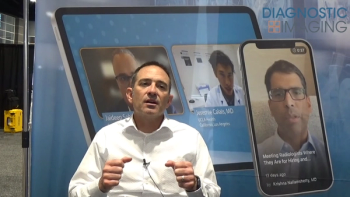
GE Healthcare Captures FDA Clearance for Industry-First Contrast-Enhanced Mammography Biopsy
Serena Bright™ shortens time to biopsy results, a critical capability during the COVID-19 pandemic.
Introduced during RSNA 2019, GE Healthcare’s Serena Bright™ -- the industry’s first contrast-enhanced biopsy solution for mammography – received 510(k) clearance Tuesday from the U.S. Food & Drug Administration.
This technology enables providers to perform contrast-guided breast biopsies without changing mammography equipment, rooms, or staff after a screening or diagnostic mammogram. Results, company officials said, can be available a few days rather than the several weeks needed for an MRI biopsy.
These biopsies and malignant lesions identifications are possible, the company said, because Serena Bright™ uses GE Healthcare’s SenoBright™ HD Contrast Enhanced Spectral Mammography. This diagnostic breast exam performed with iodine-based contrast pinpoints unusual blood flow areas, helping to localize lesions requiring biopsy. In doing so, the tool can improve a radiologist’s diagnostic confidence and accelerate patient care.
Related Content:
“Now, more than ever, it is critical we put the comfort of patients first and get them answers as fast as possible,” said Agnes Berzsenyi, president and chief executive officer of women’s health and X-ray at GE Healthcare. “We hope this technology can help improve breast cancer outcomes for women during this time of uncertainty.”
In fact, according to one published study, the United States can anticipate a potential increase of 33,890 cancer deaths. It is in the climate of the lingering pandemic that the quicker turn-around of biopsy results can be particularly valuable, said one physician familiar with Serena Bright™.
“In the current COVID-19 environment and requirements for shorter appointments to allow physical distancing, time has become our most precious asset,” said Anat Kornecki, M.D., head of the division of breast imaging in the St. Joseph’s Health Care London Breast Care Program and scientist with Lawson Health Research Institute in Ontario. “This new mammography-guided biopsy technique is a game changer, and patients tell us it’s a very tolerable experience.”
Overall, she said, the technology enables a woman to stay in a setting that is more familiar and comfortable than an MRI machine where she must lie face down for the exam.
Serena Bright™ has already been tested in clinics in France and Spain, and Jefferson Health in Philadelphia is slated to be the first healthcare system in the United States to begin offer this technology to its patients later this year.
For more coverage based on industry expert insights and research, subscribe to the Diagnostic Imaging e-Newsletter
Newsletter
Stay at the forefront of radiology with the Diagnostic Imaging newsletter, delivering the latest news, clinical insights, and imaging advancements for today’s radiologists.




























